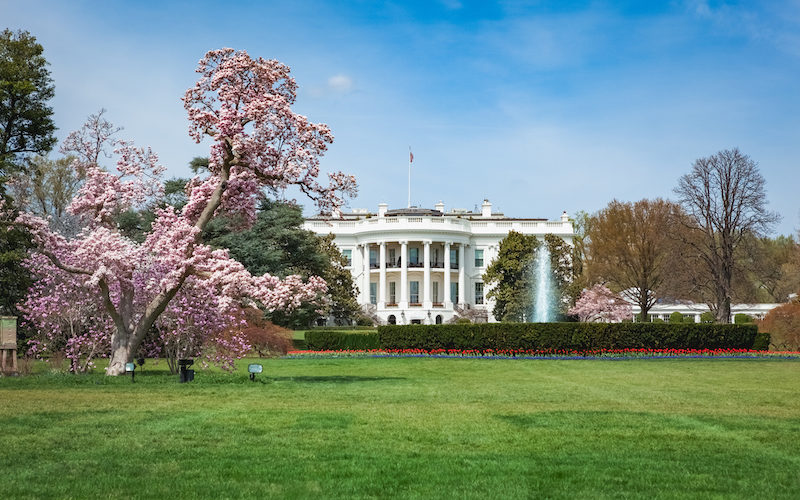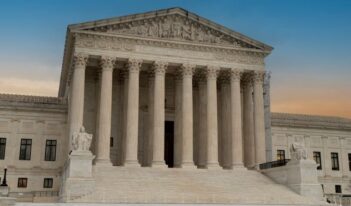
Presidents Reagan and Trump differ on approaches to social and economic regulation.
History can help explain the politics of regulation, but only if we first understand that there are different kinds of regulation out there. For example, one might usefully—if imperfectly—distinguish economic regulation—that is, the intensive regulation of specific industries in ways that often manage the supply or price of certain goods or both—from social regulation—that is, the protection of the public from general social harms, such as pollution or unsafe workplaces.
These two kinds of regulation have different histories in the United States. Much of the country’s economic regulation originated in the 1930s, as part of the New Deal response to the Great Depression. Most social regulation originated later on, especially in the early 1970s, in response to flourishing environmentalist and consumer-protection movements. And they have been attacked with different levels of intensity by administrations that have made a political commitment to deregulation, from the Administration of President Ronald Reagan in the 1980s to the Administration of President Donald J. Trump today.
Some background: By the late 1970s, a political and intellectual movement that crossed party lines had begun to rethink the wisdom of much economic regulation. Market-oriented economists argued that interfering with the work of the invisible hand was inefficient and bound to fail, while consumer-oriented liberals argued that their constituents would often see lower prices and better service through competition than they were getting through regulation.
This bipartisan movement succeeded in federal deregulation of certain industries, including, for example, the prices and schedules of commercial airlines, even while tolerating social regulation, especially when it was aimed at reducing broad social harms. The momentum generated in the late 1970s carried over into the Reagan Administration, thanks to a President who extolled the virtues of a free market and blamed the energy and stagflation crises he inherited on the overregulation of the U.S. economy. As President Reagan himself famously stated, “In the present crisis, government is not the solution to our problem; government is the problem.”
More controversially, many Reagan Administration appointees did not distinguish between economic and social regulation in the same way as President Reagan did—indeed, several members of his Administration proved far more hostile to the latter than the former.
For example, President Reagan hired James Watt, then-president of a conservative legal foundation that specialized in suing the federal government on behalf of western business interests, to run the U.S. Department of the Interior. U.S. Representative Morris Udall (D-Ariz.) reportedly called the choice of Watt the equivalent of “appointing Dracula to head a blood bank.”
President Reagan also appointed Anne Gorsuch to be head of the U.S. Environmental Protection Agency. Gorsuch was part of a faction in the Colorado state legislature known as the “House Crazies” for their uncompromising conservatism.
Although neither Watt nor Gorsuch lasted long in office, and the Reagan Administration walked back its anti-environmentalism once they departed, both officials nevertheless helped set the early tone of the Reagan Administration on environmental issues and oversaw significant reorganizations of their agencies’ structure designed to make policy more responsive to the interests of regulated entities.
At a more philosophical level, the Reagan Administration hired and cultivated a number of lawyers and legal activists who not only opposed both economic and social regulation—but also believed that the federal regulatory state as it existed in the 1980s was an affront to the U.S. Constitution.
In 1984, one high-ranking U.S. Department of Justice lawyer suggested that a group of attorneys “sit down and come up with a strategy for having independent agencies”—all of them—“declared unconstitutional.” Several others became enamored with the idea—later articulated in broader-brush terms by the legal scholar Richard Epstein—that the Takings Clause of the Fifth Amendment might be used to invalidate large amounts of environmental regulation and government planning of land use of and development. Still others sought to inscribe “economic liberty” in U.S. Supreme Court doctrine as a civil right equivalent to equal protection or freedom of worship.
Some of these efforts were controversial within the Administration, which also contained a fair number of pragmatists and traditionalists.
In 1985, a group of lawyers at the U.S. Department of Justice wanted to ask the Supreme Court to hold land use and planning agencies liable for a “temporary taking” of private property even when the regulation in question was rescinded or a temporary moratorium lifted. Such a ruling had the potential to hamper local planning and land use agencies by making their actions prohibitively costly.
But their efforts were rebuked by President Reagan’s own solicitor general, Charles Fried. He argued that the “original intent of the Fifth and Fourteenth Amendments…was to prohibit uncompensated takings but was not to…give the courts, rather than the legislative branch, control of the fisc.”
The debate inside the Administration continued long past, and well outside, the case in question. It soon became a staple of conversation in the nascent Federalist Society, conservative and libertarian legal academic circles, and the courts.
The regulatory agenda of the Trump Administration—like the Trump Administration in general—has been at once a continuation of past trends and an unusual break in new directions.
President Trump often appears more hostile to social regulation, especially environmental regulation, than even Watt or Gorsuch were. He repeatedly denies that global warming might even be a problem and professes a love for various fossil fuels.
At the same time, Trump has shown significant affection for certain kinds of economic regulation. Indeed, the Trump agenda of protective tariffs and favoritism toward certain industries arguably resembles the “industrial policy” proposed by leading Democrats of the 1980s, especially former Vice President Walter Mondale, more than it resembles the worldview of Reagan-era Republicans.
Time will tell whether this Administration’s agenda represents a lasting change to the Republican worldview or a quirky obsession of an unusual President.
This essay is part of a five-part series, entitled Deregulation Then and Now.




